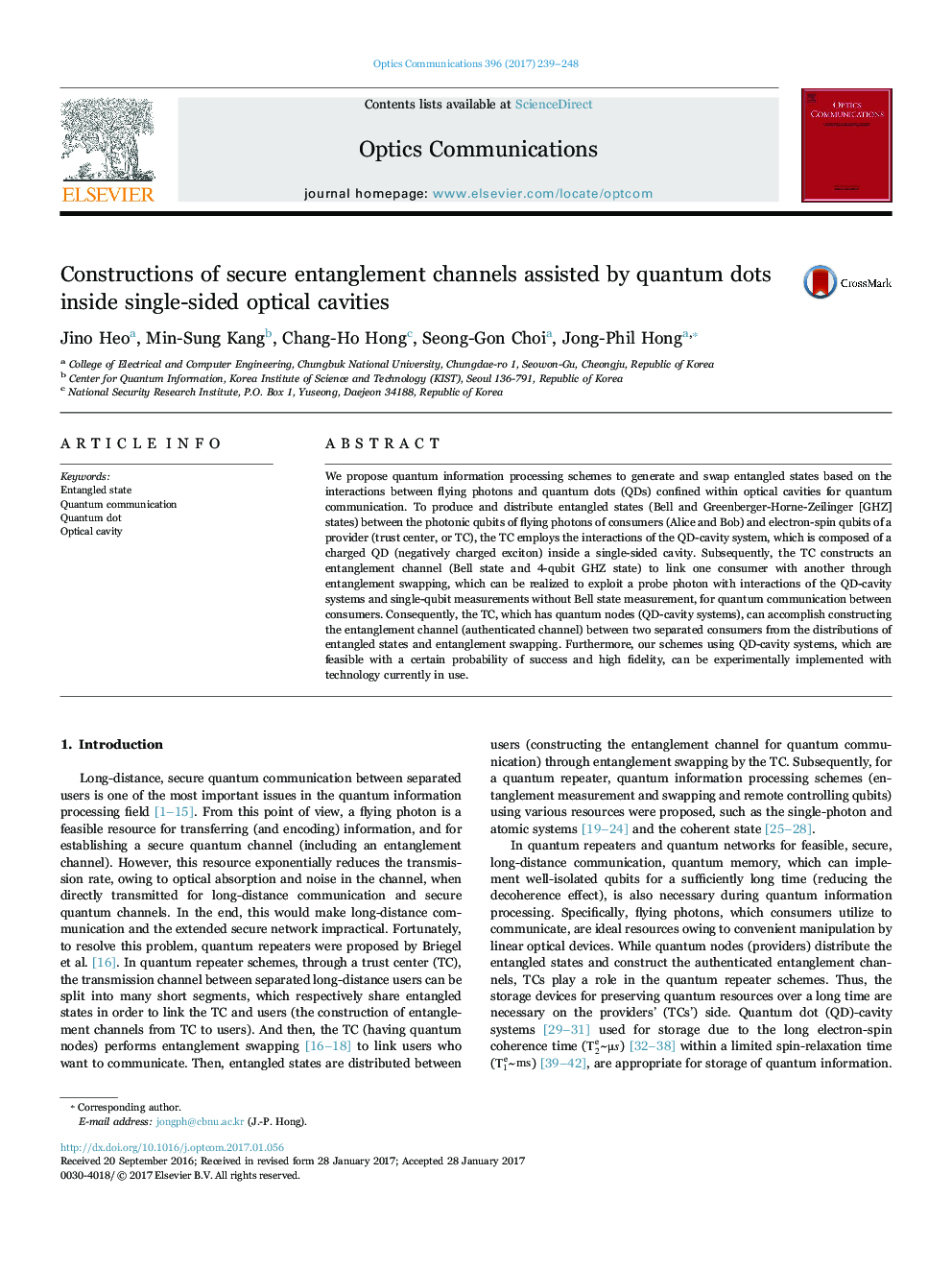| Article ID | Journal | Published Year | Pages | File Type |
|---|---|---|---|---|
| 5449438 | Optics Communications | 2017 | 10 Pages |
Abstract
We propose quantum information processing schemes to generate and swap entangled states based on the interactions between flying photons and quantum dots (QDs) confined within optical cavities for quantum communication. To produce and distribute entangled states (Bell and Greenberger-Horne-Zeilinger [GHZ] states) between the photonic qubits of flying photons of consumers (Alice and Bob) and electron-spin qubits of a provider (trust center, or TC), the TC employs the interactions of the QD-cavity system, which is composed of a charged QD (negatively charged exciton) inside a single-sided cavity. Subsequently, the TC constructs an entanglement channel (Bell state and 4-qubit GHZ state) to link one consumer with another through entanglement swapping, which can be realized to exploit a probe photon with interactions of the QD-cavity systems and single-qubit measurements without Bell state measurement, for quantum communication between consumers. Consequently, the TC, which has quantum nodes (QD-cavity systems), can accomplish constructing the entanglement channel (authenticated channel) between two separated consumers from the distributions of entangled states and entanglement swapping. Furthermore, our schemes using QD-cavity systems, which are feasible with a certain probability of success and high fidelity, can be experimentally implemented with technology currently in use.
Related Topics
Physical Sciences and Engineering
Materials Science
Electronic, Optical and Magnetic Materials
Authors
Jino Heo, Min-Sung Kang, Chang-Ho Hong, Seong-Gon Choi, Jong-Phil Hong,
